Teacher and Family Resources for ANYWHERE, ANYTIME LEARNING
Hello!
We are Amy, Nancy, and Melissa and we’ve been teaching and speaking about Joan Bauer’s books since 2010.
Why do we like her books so much?
What sets them apart?
- Joan incorporates powerful life lessons with hope.
- Joan builds strong, relatable, and diverse characters with grit.
- Joan tackles tough subjects delicately through humor.
What do students, both girls and boys, have to say?
- Hope was here: “It made me realize I should appreciate what I have in life…I could relate because my real dad is gone.”
- Tell me: “It tells you to speak up if something isn’t right and not stay quiet.”
- “You should never give up, and believe in yourself.”
There are so many ways to bring a story alive…here you will see student projects, a collage of Netflix, social media, word clouds, and bitmoji examples.
Please join us in exploring the layers of possibilities for teachers and students to dig deep into Joan Bauer’s stories.
Here’s how the Common Core State Standards tie into these activities…
- Netflix (RL1, RL2, RL3, & W4) – Students create a Netflix series based on one of the books. For example, students would include a summary of the book, different episodes, what students could “watch” next or read next if they liked this book, genre, date, including the main characters, and length and time of the episodes.
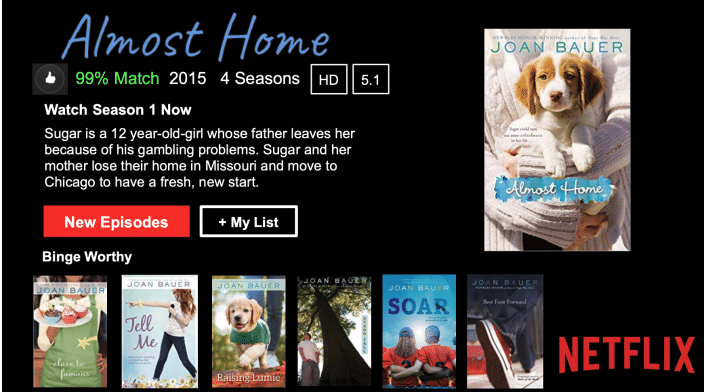
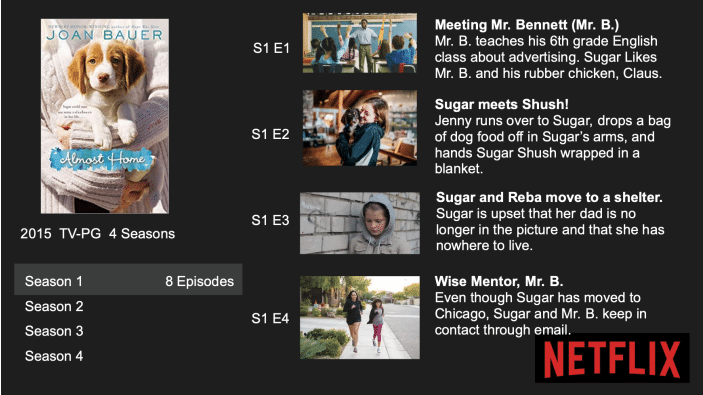
- Bitmoji Scene (RL1, RL3, RL5, RL7, & W4) – Students create a Bitmoji character based on the main character of the book (www.bitmoji.com) and include the Bitmoji in a scene they recreate from the book. They can choose a scene that resonates with them, or they can be directed to choose something more specific such as the scene with the climax, etc.
- Once the Bitmoji is created, students can use Google Slides to create their
book scene and copy and paste their Bitmoji into the scene.
- Once the Bitmoji is created, students can use Google Slides to create their
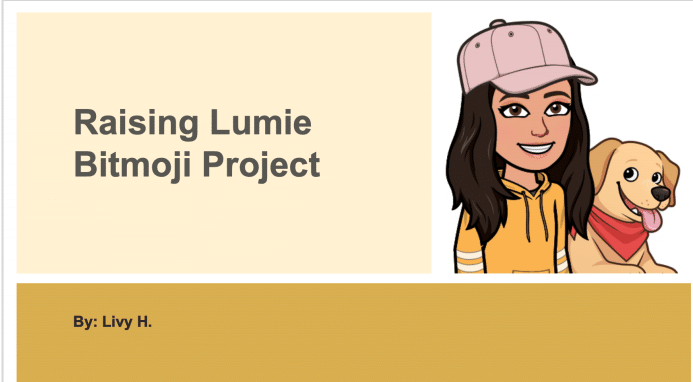
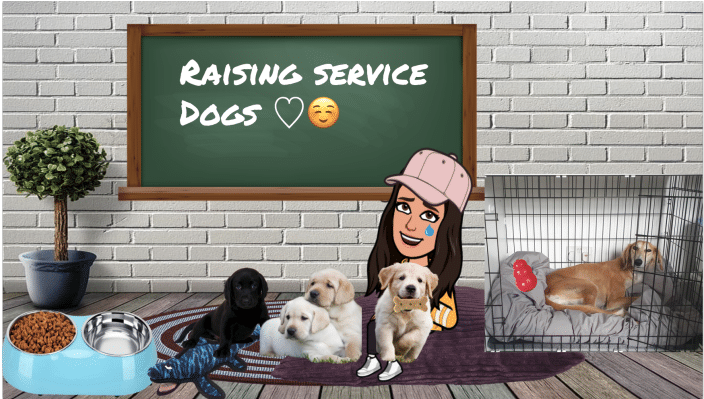
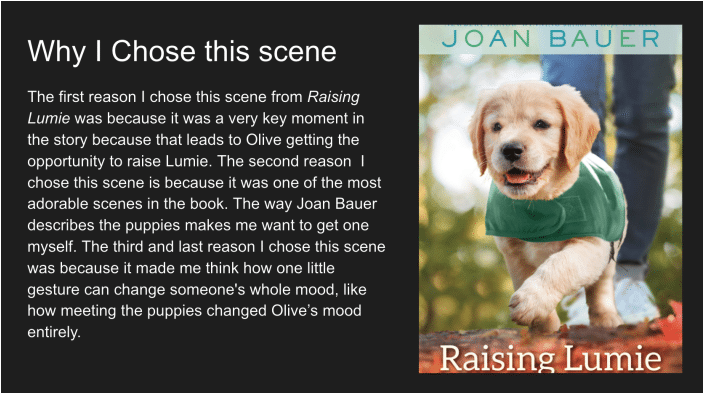

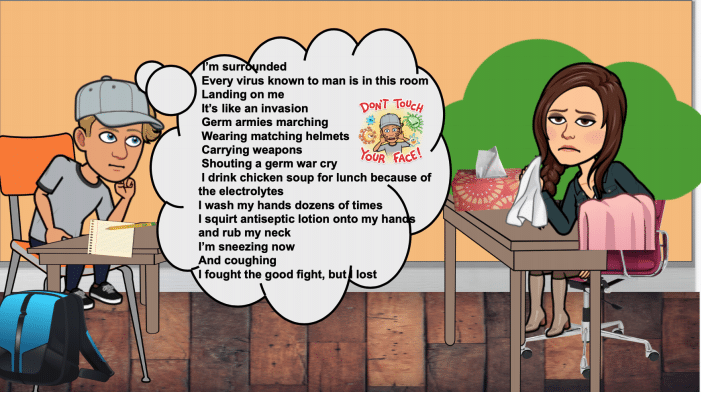
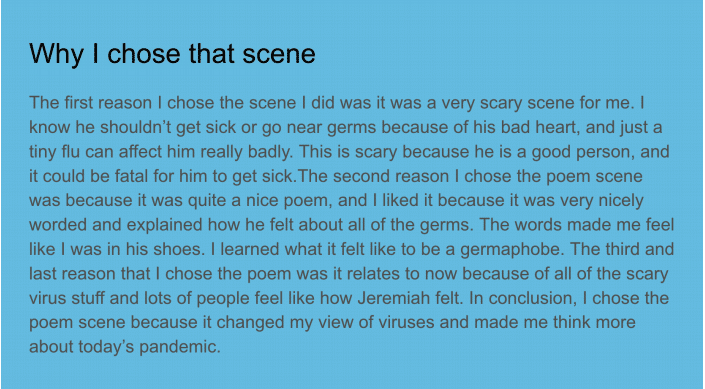
- Social Media (RL1, 3; W 4; SL 1) – Students can choose a social media platform such as Instagram, FaceBook, Twitter, etc. to create a profile for a character in their book. The profile gives readers a clear understanding of the chosen character. The profile can include likes, dislikes, reactions to various plot events, etc. You can use Google to find templates for any social media platform.
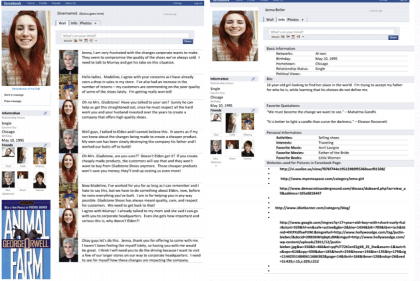

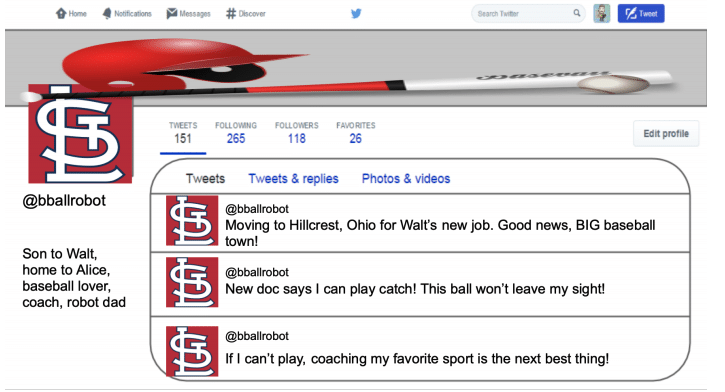
- Show & Tell (RL1, RL2, & W4) – Students find an object from home (or draw a picture of an object) to represent something significant from the story, and they explain why they chose that object and what it represents. Students can focus on character development, theme, important conflicts, etc.
- This can be done digitally using a video conference call. Their
explanations can be written or verbal.
- This can be done digitally using a video conference call. Their

- Word Clouds (RL 2, W 4) – This is an online tool (www.wordclouds.com) that allows students to create “word clouds” on any given text or topic. Students can customize the font, layout, and color of their word clouds. These can be structured in different ways, such as:
- Character based
- Theme based
- Draw connections across books from the same author
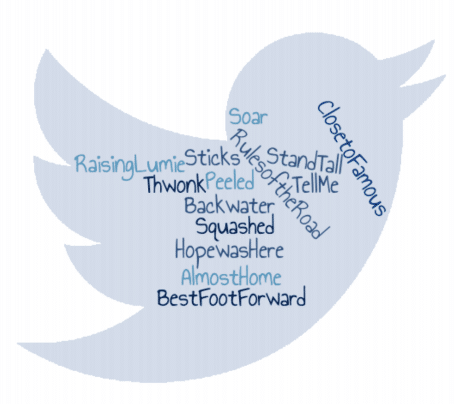
- End of Book Collage (RL 2, RL 3, W 4) – This is a visual summary of a book. Students fill the page with colorful images, words, and phrases that reflect the book’s content. Students’ collages could focus on one of the following:
- Key plot events from the book
- Major conflicts throughout the book
- Character interactions within the book
- Overall literary element reflection
- NOTE: These can be digitally created using Google Drawings, Google
Slide, PowerPoint, etc.
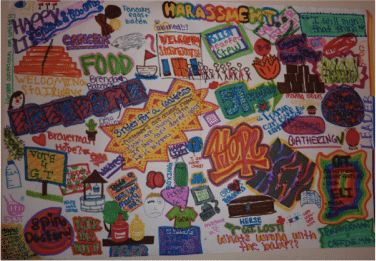
- Digital Notebook (RL1, RL2, RL3, RL4, RL5, RL6, RL9, W1, W4, & W9) – Students create a digital version of a Reader’s Notebook. They can focus their entries on theme, character development, conflict, inferences, and compare and contrast texts. You can Google “digital notebook” to find templates and/or examples. A helpful site is: www.slidesmania.com.
- This can also be done using paper, pencil, and a notebook.
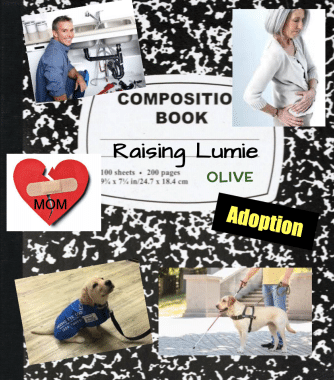
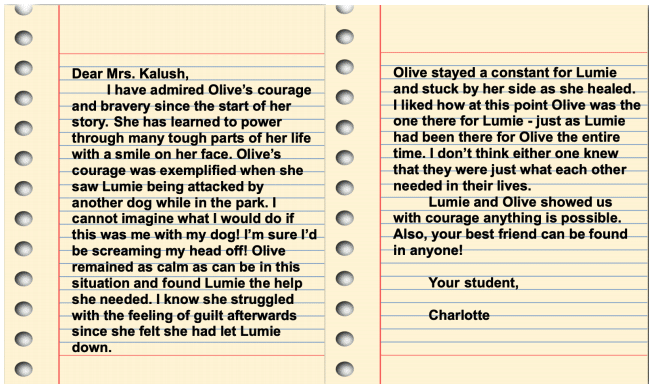
- Poetic Response (RL 2; W 4, 9) – Students can create a poem in any format (free verse, haiku, acrostic, prepositional phrases, etc.) where they react to the book. The focus can be as open or specific as you choose.
Soar
By: Taylor S.
A book of character,
A spirit of lifting, heroic
Story of hope,
And a wonderful moral
- Doodle Journal (RL 2) – These are fun and creative journals that enable students to interact with their book! We used these in class during our Joan Bauer read alouds so that the students could respond and react to the story. You can set these up in many different ways, depending on what you want to emphasize with a novel. Each of us used these in slightly different ways, yet we all focused on theme:
- 4th-5th Graders—Worked with visualizing and determining theme as
they listened to Stand Tall. - 6th Graders—Worked with predicting while they listened to Peeled.
- 7th Graders—Worked with connecting key details to a theme as they
listened to Hope Was Here. - 8th Graders—Worked with visualizing and central idea(s) as they listened
to Rules of the Road.
- 4th-5th Graders—Worked with visualizing and determining theme as
- Paired Readings (RL/RI 2, RL/RI 6, RI 9) – This activity allows students to draw connections across multiple pieces of text, both fiction and nonfiction, on a given topic. Our students read and annotated numerous pieces of texts on topics presented in our Joan Bauer titles. Using paired readings is a great way for teachers to incorporate numerous Common Core State Standards within one lesson. For example, in Rules of the Road, the main character’s father is an alcoholic. In addition to reading the novel, the students read age-appropriate nonfiction articles about alcoholism to help them better understand the struggles the characters face. Soar has wonderful connections for deeper understanding — Jeremiah’s heart condition, cheating in sports, is winning really all that matters
- Circle Discussion (SL 1, SL 4) – This is a twist on a typical class discussion. With a circle discussion, students place themselves in a large circle and take turns adding to the discussion. Sometimes they offer something new, other times students are commenting on something a classmate says, or asking a question. The teacher monitors the discussion, but doesn’t participate, and can pre-select questions for the students ahead of time. This discussion is entirely student led!
- This can be done digitally with classes via an online conferencing tool such as Zoom. Zoom has a feature called breakout rooms where students can be put into small groups and the teacher can monitor and join each separate group.
- Book Trailer (RL 2, 3; W 4, 6) – Like movie trailers, the purpose of this short video is to create a commercial that persuades viewers to read the book. Students can incorporate important book details and graphics to advertise their book. A helpful resource is www.flipgrid.com.
Family and Home Engagement:
- There is a lot of talk in the media that students today won’t read, but we believe students substitute other distractions (the Internet, TV, video games, etc.) if they feel no passion for the book they are reading. Joan Bauer’s books all include powerful life lessons—overcoming life’s obstacles helps one build character, family can be found in unlikely places, hope can get you through the darkest of times—that create opportunities for important conversations. Reading one or more of her books together as a family can enable you to have these conversations with your child. These books often open the door to difficult but necessary conversations. The best books challenge our beliefs by helping us see through different eyes—to live a different life. Reading allows us to confront our worst fears and live through them. Sometimes, we face difficult times in life and feel like we are the only person going through that situation. Reading a book in which a character is having the same experience can reassure us that we are not alone; we will survive the difficult times in our lives.
Reading together as a family can be done in different ways:
- Read-aloud—Choose a text you all want to read and either choose one person who will read aloud to everyone else, or everyone can take turns reading out loud to each other. This enables you to discuss the book as you read. This can be done with a copy of the book in hand or as an audiobook.
- Book Club—Each member of the family would have his or her own copy of the same book (either paper copy or an audiobook). You could establish a reading schedule and choose topics to guide your discussions.
Relevant Reads:
Soar:
- “Sometimes loss is a thing so thick, it hangs in the air.”
Raising Lumie:
- “You can’t just have a dream and expect it to come to you. You’ve got to get something you can hold on to that shouts, ‘This going to happen!’”
- “Life doesn’t always work out the way you want or expect, but that doesn’t mean it can’t be an adventure.”
Joan Bauer leaves students thinking long after finishing one of her books because of the many powerful messages she infuses into her stories.
Here are a few examples:
Hope Was Here (used as a 7th grade read aloud)
- This book is my kickoff read aloud each year and it works wonders! My students, girls and boys, get wrapped up in Hope’s life and journey, her struggles, and her quest to find the true meaning of family. The students relate to this book on numerous levels and I am always amazed with the personal stories they share in class that show how this story resonates with them. ~Melissa
- “You’ve got to love yourself with all your shortcomings, and you’ve got to love the world, no matter
how bad it gets.” - “One person can make a difference, two can lift a burden, and more than that can start a revolution.”
- “That’s about the best thing a kid can have in life—somebody out there fighting for them.”
Rules of the Road (used as an 8th grade read aloud)
- Jenna’s journey in this book sets the stage for the many real-world conflicts Joan Bauer infuses into this story and our class discussions are deep and thought provoking! My students appreciate the strong character development in this book and find numerous lessons to take away from the reading, such as the importance of self-discovery and understanding what family means. ~Amy
- “Love the person, hate the bad things they do. Sometimes loving from far off is a whole lot easier than eyeball to eyeball.”
- “If you set your mind and heart toward a healthy way of living and thinking, you’ll find a way to climb out of the biggest pit life throws your way.”
- “You never know where the road’s going to take you. I think sometimes it’s less important that you get to your destination than the side trips you take along the way.”
Stand Tall (used as a 5th grade read aloud)
- Both the boys and girls in my 5th grade class enjoyed hearing Joan Bauer’s story of Stand Tall. The boys appreciated seeing how Tree dealt with real life situations which some of them are struggling with—divorce and bullying. The boys also connected with Tree’s sense of humor and the strong relationship he had built with his grandfather. ~Nancy
- “House was a word he’d always taken for granted. He knew there was a big difference between a house and a home.”
- “You can’t measure the loss of a human life. It’s all the things a person was, all their dreams, all the people who loved them, all they hoped to be and could give back to the world.”
- “Loss helps you reach for gain. Death helps you celebrate life. War helps you work for peace. A flood makes you glad you’re still standing. And a tall boy can stop the wind so a candle of hope can burn bright.”
Almost Home (used as a 5th grade read aloud)
- Sugar Mae Cole resonated with the girls and boys in my class. The girls connected with Sugar on an emotional level and felt sympathy for her situation. They were her cheerleader and encouraged her to keep on fighting. The boys were boys—they wanted to be in the story to yell, scream, and knock some sense into Mr. Leeland. They were Sugar’s protector throughout the story. ~Nancy
- “It’s cool to have friends who help you figure out your life.”
- “You know what it’s like to move from being happy to being not? It’s like swinging as high as you can and someone stops you as you come back down.”
- “One of the big lessons is that you learn about people not just by the words they say, or the promise they make, but by what they do.”
Peeled (used as a 6th grade read aloud)
- “A fierce desire can get you a long way in this world.”
- “Anything is possible when you have a true heart.”
- “It’s a funny thing how fear grows. It moves like a virus, infecting person after person.”
Thwonk
- “Love that embraces the entire person is a monumental gift that takes time to grow!”
- “You must listen to the things that you try to ignore.”
Sticks
- “Disappointment. When you look it in the face, admit how much it hurts, when you can forgive the people involved, including yourself, you can move on.”
- “Courage rarely comes without fear. Courage rises above fear and makes people more than they
think they can be.”
Backwater
- “A family history can’t just be about the people we understand.”
- “Sometimes our weaknesses can become our greatest strengths.” Close to Famous
- “Let me tell you something about sad days. They’re just part of life, but the best thing you can do on the happy days, or on the sad ones, is to do what you do best with everything you’ve got.”
- “My teacher told me some people come naturally to reading and others have to work twice as hard. There’s nothing wrong with having a different way of learning. What’s wrong is when people blame you for it.”
Squashed
- “A life without goals is a life without direction.”
Best Foot Forward
- “We don’t know how much longer we’ll have on this earth, so we’d better let people know we love them now.”
- “My father always told me that in this world we’re going to make a truckload of mistakes, but the best mistake we can ever make is to err on the side of mercy.”
Tell Me
- “In every fight for something important, there’s always a time when it feels like nothing’s happening.”
- “Pay attention to what’s going on around you. Trust your instincts. If you see something, say
something. Don’t be afraid to do something BIG. Listen to people, really listen, and figure out how
you can help.”
This work is licensed under a Creative Commons Attribution-NonCommercial-ShareAlike 4.0 International. License.
Bios:
Dr. Amy Bender is currently a sixth-grade language arts teacher at Prairie Knolls Middle School in Elgin, Illinois in Burlington School District #301. She has previously taught eighth-grade ELA as well as numerous subjects at the middle school level for the last sixteen years: physical education, science, English, and literature. Amy earned her doctorate degree in literacy at Judson University in Elgin, Illinois in May 2018. She has presented at numerous state and national conferences on literacy topics. You can contact Amy at [email protected].
Nancy Kalush is a sixth-grade teacher at Hanover Countryside Elementary School in Streamwood, Illinois in School District U-46. She has taught grades four through six for the past fifteen years. Nancy earned her Master of Education in Literacy degree at Judson University in Elgin, Illinois in December 2011. She has presented at Judson University as well as at the International Reading Conference in San Antonio. You can contact Nancy at [email protected].
Dr. Melissa Leisner is a seventh-grade language arts teacher at Prairie Knolls Middle School in Elgin, Illinois in Burlington School District #301. She has taught seventh and eighth-grade language arts for the past twenty-one years. Melissa is an adjunct faculty member at Judson University in Elgin, Illinois in the Master of Education in Literacy program as well as the Doctorate of Education in Literacy program. She has presented at various state and national conferences on literacy topics and was honored to receive the National Milken Educator Award in November 2013. You can contact Melissa at [email protected].